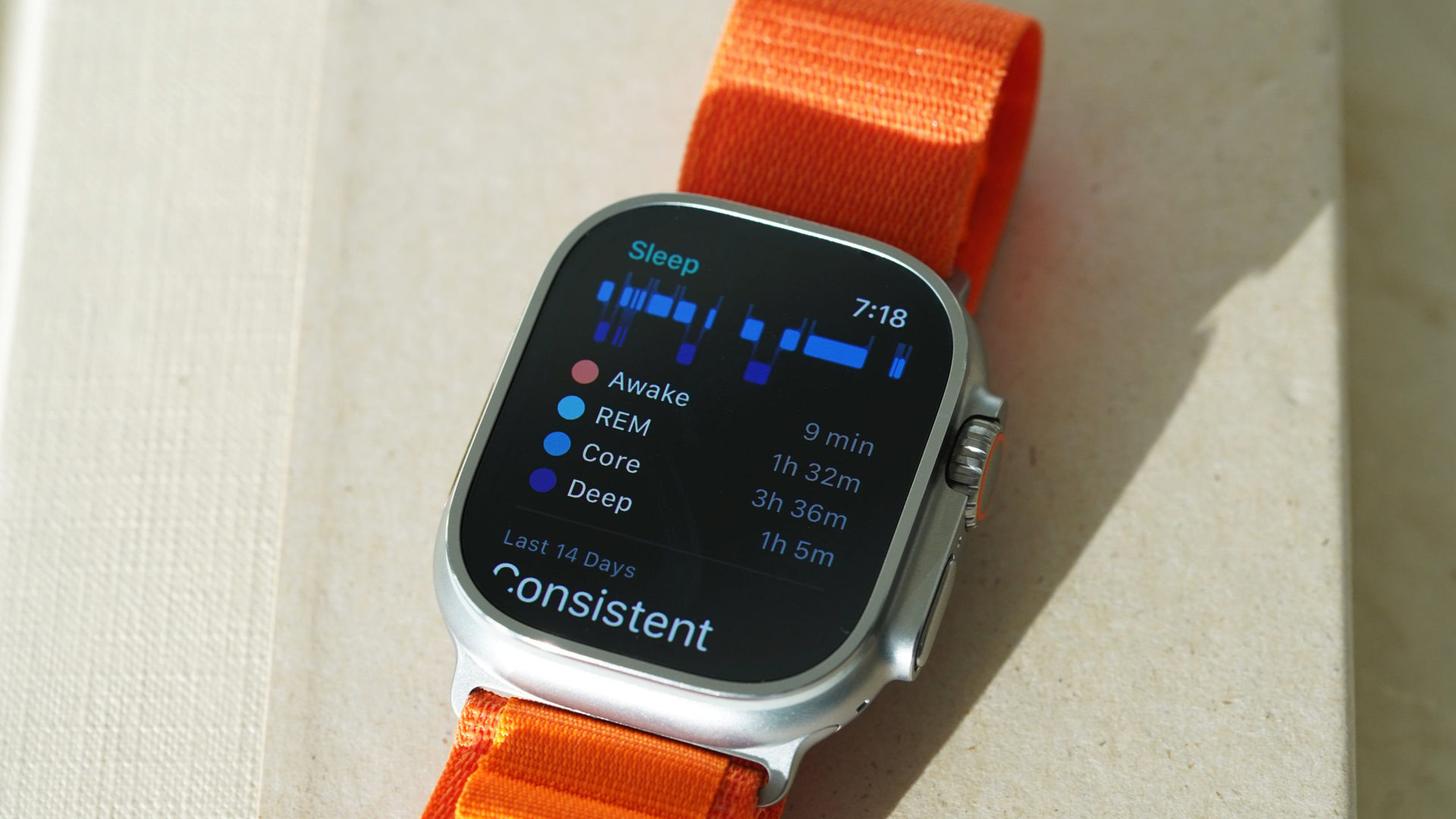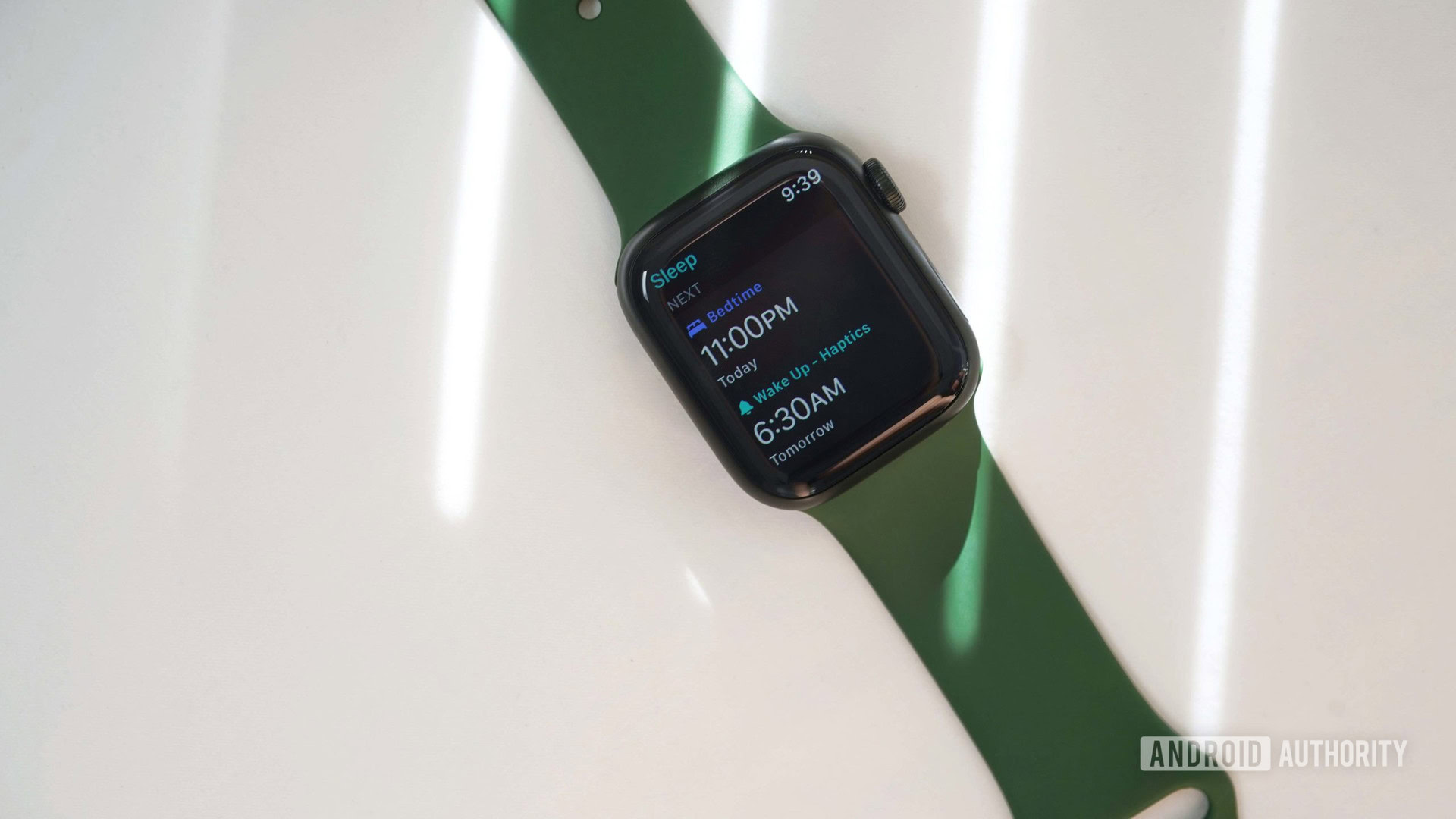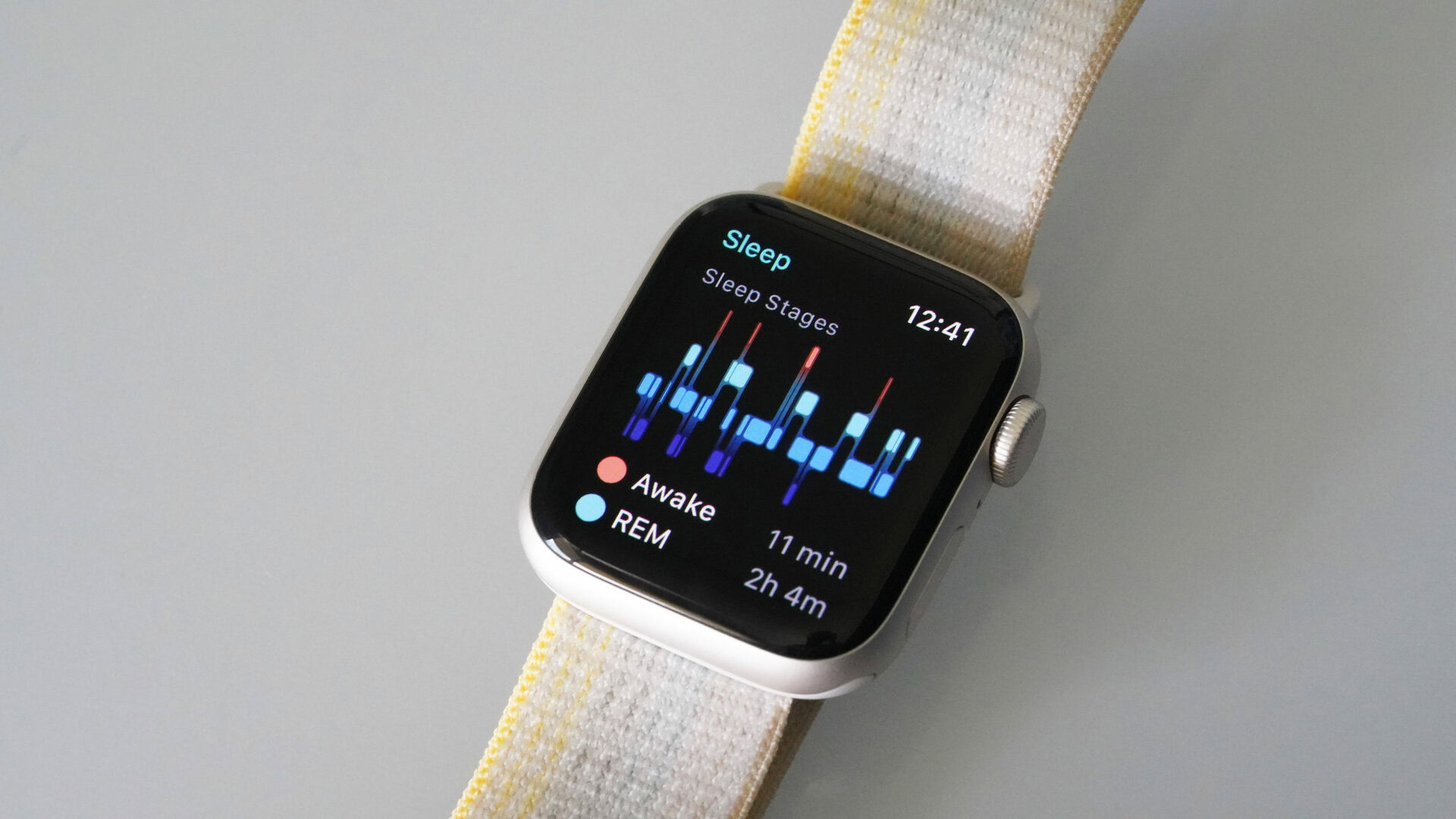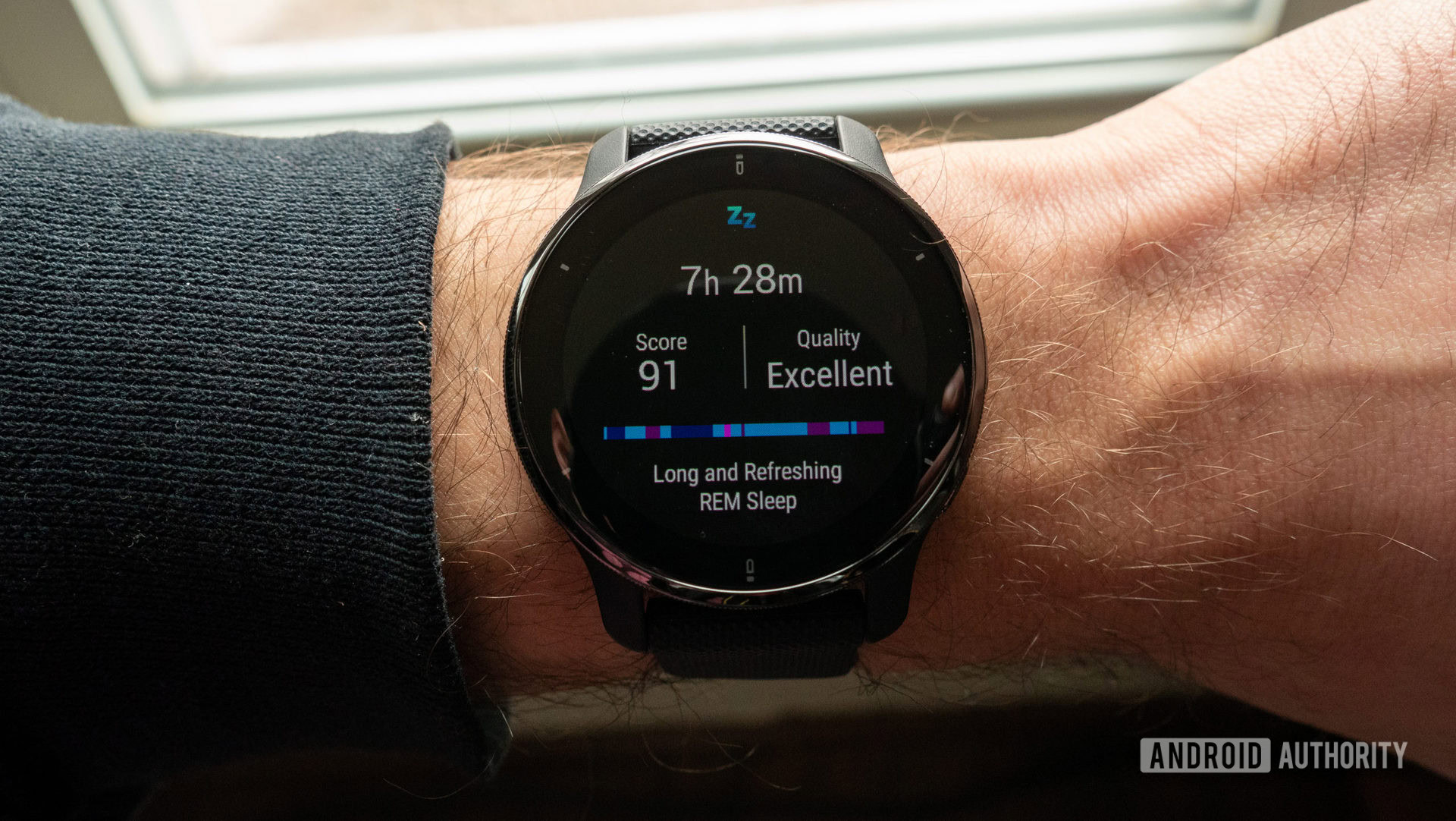Affiliate links on Android Authority may earn us a commission. Learn more.
Does the Apple Watch track sleep? Yes, but there are some caveats.

Quality sleep is key to overall health, but can you rely on the Apple Watch sleep tracker to maximize this? The short answer is yes. If you own a Series 9, the Apple Watch SE (2022), or any Apple Watch from the Series 3 or newer, you can track sleep in the Sleep app, a set-and-forget feature that is simple to start and runs each night automatically. However, Apple’s data sleep data remained mediocre at best for a long time. Fortunately, we finally saw some upgrades to Apple’s sleep tracking with watchOS 9.
QUICK ANSWER
Yes, the Apple Watch does track sleep. However, it doesn't summarize the data as well as its competitors.
JUMP TO KEY SECTIONS
How to track sleep on the Apple Watch

The Apple Watch is one of the best sleep trackers around, and you can use it to create a routine and cultivate better sleep habits. The CDC recommends adults get at least seven hours of shut-eye a night, and the Apple Sleep app can help you get on track. Create your personalized sleep schedule by following the prompts on your device. Once set up, you can adjust your goal and schedule on your iPhone or Apple Watch.
On your iPhone
- Open the Health app and tap Sleep.
- Tap Full Schedule & Options, then tap Edit to change your weekday, weekend, or another specified schedule.
- Under Additional Details, tap Sleep Goal, and choose your desired amount.
On your Apple Watch
- Open the Sleep app on your Apple Watch.
- Follow the on-screen instructions to establish a Sleep Goal, Bedtime, and Wake Up time.
Once you’re set up, the only step left is to wear your Apple Watch to bed. Sleep mode automatically disables Lift to Wake, so you don’t activate a bright screen while getting comfortable. To temporarily exit Sleep mode, tap your screen and turn the Digital Crown to unlock. Make sure to adjust your charging habits so your device has enough battery to last the night.
What does the Apple Watch track?

Apple’s sleep tracking will record your total time asleep and track each time you wake up throughout the night, as well as your heart rate and calorie burn. It will also record how much time you spend in bed and provide weekly, monthly, and biannual sleep time averages. This data is based on your motion during Sleep mode.
Notably, the app offers the option to create multiple sleep schedules, including a chosen bedtime, preferred wake-up time, alarm, and sleep goal. Based on your schedule, your device will automatically enter Sleep mode (which limits distractions before bed and keeps you safe from interruptions while you sleep).
With the arrival of watchOS 9, Apple also added sleep stages to its tracking suite. This feature elevates Apple’s offerings to the level of competitors who have been tracking sleep stages for some time now.
After wearing your Apple Watch to bed, you can analyze when you were in REM, Core, or Deep Sleep and when you were awake throughout the night. Apple Watches can even track your breathing rate as you sleep, for keeping tabs on your respiratory health.
With the arrival of watchOS 10, sleep data can be viewed alongside new mental health tools to see how your restfulness affects your overall mood.
Temperature sensing
The Apple Watch Ultra 2, Ultra, Series 9, and Series 8 feature temperature sensors for tracking users’ wrist temperature overnight. Shown as a change from your baseline temperature, this data can provide insight into users’ overall health. For those who menstruate, wrist temperature is also helpful in cycle tracking accuracy and ovulation estimates.
View your sleep history
In the morning, wake up to an informative greeting, then review your night’s rest and compare it to the rest of the week. You can scan how much sleep you got the night before, including your time in each sleep stage, and review your sleep average over the last two weeks. For more stats, like weekly long-term averages, or to find out how your heart rate fluctuated throughout the night, access the data on your paired iPhone.
Apple Watch sleep tracking: Where does it fall short?

So yes, now you can find out how much you are (or aren’t) sleeping, but Apple still misses the mark regarding actionable insights.
Sleep scores
Are you tossing and turning all night long or clocking real, restorative rest? Many wearables, including newer devices from Fitbit, provide a daily sleep score, summarizing your sleep in a helpful and actionable way. Who doesn’t find motivation in a grading system? Fitbit devices and the Pixel Watch series offer Sleep Profile, a program that analysis users’ sleep on a monthly basis and assigns each individual a sleep profile that best represents their habits. With the Galaxy Watch 5 series, Samsung also added similar functionality to its sleep tracking, and further improved it with the Galaxy Watch 7. Apple now tracks sleep stages but doesn’t offer this level of insight or data interpretation.
Sleep concerns
The Apple Watch can’t diagnose sleep conditions, so you’ll still need to visit the doctor if you notice anything off. The Withings ScanWatch series is one of a few wearables that detect signs of sleep apnea or serious AFib with a medical-grade ECG and pulse oximeter. The Samsung Galaxy Watch series also features sleep apnea detection, as certified by the FDA, but this feature requires a Galaxy smartphone to function. Your Apple Watch might be able to clue you into some irregularities, but it’s not approved as a medical device.
Simply put, the Apple Watch tracks quantity, but not necessarily quality.
While the Apple Watch does track sleep, it doesn’t present the data as helpful as other sleep trackers. Couple that with the fact that many wearables outperform the Apple Watch regarding battery life, and Apple still seems behind in the race to track sleep data.
Get more out of your Apple Watch sleep tracking
Don’t settle for limited info. Many Apple Watch owners use third-party apps to supplement the Sleep app and collect more details.
- The widely popular app Autosleep integrates seamlessly with Apple Health and even offers a similar experience to Apple’s activity rings. Autosleep tracks the duration and quality of your sleep and lets you know how prepared you are for the day based on your rest.
- Another highly-rated option, Sleep++ provides data-driven sleep tracking that lets you know how many times you enter deep sleep a night.
- Pillow offers in-depth sleep analysis charts and a smart alarm clock function that will wake you up at the optimal time for maximum refreshment.
FAQs
No, the Apple Watch does not track sleep apnea. It can monitor breathing metrics, heart rate, and heart rate variability while sleeping, which could help signal potential problems, but the device will not diagnose you with any conditions.
The Apple Watch can detect a user’s phase of sleep by using its built-in heart rate sensor and accelerometer. It’s not an exact science, but we find it to be fairly accurate.
No. You have to wear your Apple Watch to bed if you want it to track your sleep and additional nighttime data.
Yes. The Apple Watch uses its accelerometer to keep tabs on your breathing rhythm at night. To view this data, open the Health app on your iPhone > Browse > Respiratory > Respiratory Rate > Show More Respiratory Rate Data.
The Apple Watch uses its built-in accelerometer to detect movement and its heart rate sensor to keep tabs on sleep cycles.